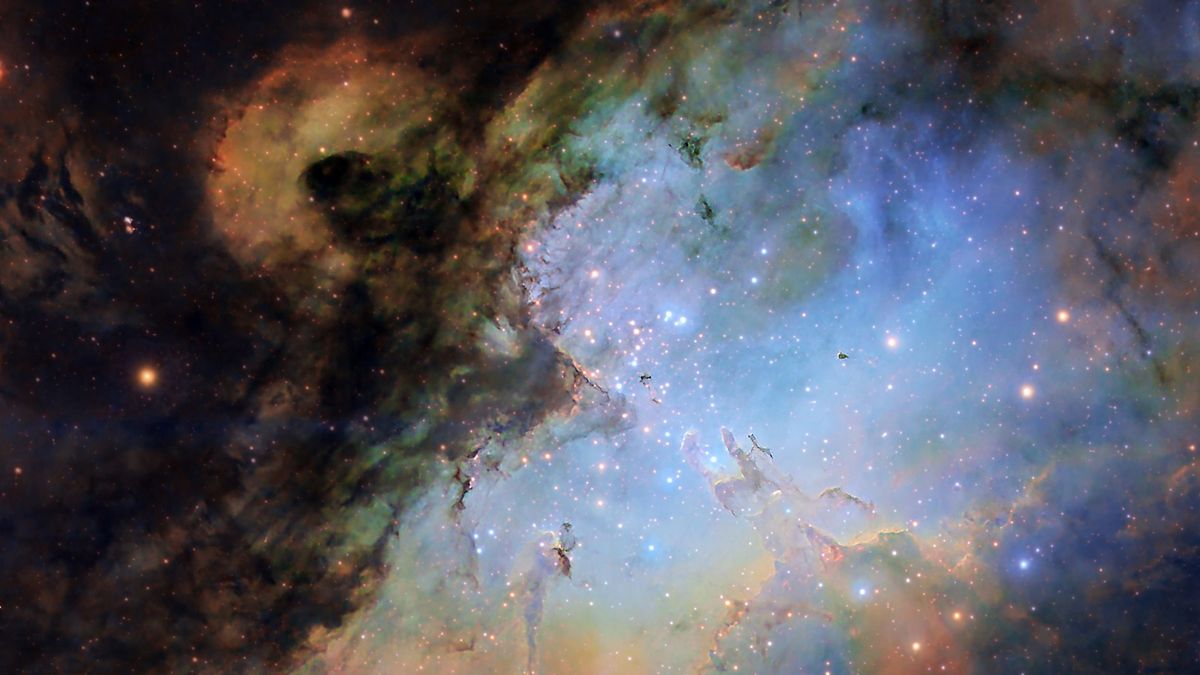In this excerpt from “Matter: The Magnificent Illusion” (Polity, 2025, translated by Edward Williams), author and physicist Guido Tonelli delves into the discovery of dark energy, and the multiple attempts to explain this strange phenomenon that appears to be driving the ever increasing expansion of the universe.
The discovery of dark energy was a real surprise for everyone, including those working on it. When it happened, in 1998, the astronomers who were the first to find themselves in the presence of such surprising data, couldn’t believe their eyes. And yet the results left no doubt.
The velocity at which the universe had expanded was not constant; on the contrary, for quite some time now it had been increasing significantly. Everything was moving away from everything at an increasingly frenetic rhythm.
What scientists were seeing contradicted what they were expecting; the idea of the accelerated expansion of the universe was counterintuitive. Everyone expected that the attraction exerted by gravity would slowly reduce the expansion velocity of space-time, whereas the exact opposite was happening.
For many years, different teams of scientists tried to understand whether what the data was pointing to was real or whether, on the other hand, errors had been made in the measurements. In the end, they gave in to the evidence. There was no doubt that a new natural phenomenon was being observed, however completely unexpected it was. In the end even the Royal Swedish Academy of Sciences in Stockholm recognized the importance of the work of Saul Perlmutter, Brian Schmidt and Adam Riess, the three astronomers who had carried out the early research, rewarding their discovery with the 2011 Nobel Prize.
Right from the earliest moments, in an attempt to explain this strange phenomenon, the expression dark energy was coined, indicating the complete ignorance of the mechanism that produced it: an absolutely unknown form of energy seemingly pushing everything away from everything else and growing as the dimensions of the universe grow.
Some imagined a kind of anti-gravity, an extremely strange behaviour of gravity which from being attractive, as we know it, becomes repulsive over great distances. Others imagined a kind of vacuum energy, a positive energy, which creates a kind of negative pressure, thereby pushing everything towards dilation.
The idea that the void contains positive energy which makes it expand goes back many years. And Albert Einstein was the first to come up with it. To make the universe static, that is to counterbalance the effect of gravity, which, acting alone, would sooner or later make everything collapse into one point, Einstein added a positive constant, called the “cosmological constant” into his equations by hand, that is to say arbitrarily. This classification served to build a balance; making the universe expand countered the effects of gravity and made it stable.
Later, when it was discovered that everything had had a turbulent beginning and that galaxies were still moving apart from one another, Einstein regretted this choice, to the extent of referring to it as one of the worst blunders of his life. In fact, with a universe arising from an ultra-dense and super-incandescent singularity, there was no need for this further impetus to expansion to produce a condition of equilibrium. The curious thing is that nobody, least of all Einstein, could predict that by the end of the 20th-century, the discoveries made by Perlmutter, Schmidt and Riess would bring his cosmological constant back into vogue. And so, it seems as if nature will always end up proving Einstein right, even when the great scientist is convinced that he’s clearly wrong.
In this case, too, precious information about the presence and distribution of dark energy can be extracted by analyzing the tiniest inhomogeneity in cosmic background radiation and the gravitational lens effects produced by galaxies and clusters. It’s curious to discover that it is still light which allows us to take a look at this shady side of the cosmos.
The distribution of dark energy in the cosmos is very homogeneous. It behaves quite differently from matter, whether ordinary matter or dark matter. These latter material substances have reticular distributions with high- density nodes and filaments alternating with broad empty spaces. On the contrary, dark energy is distributed uniformly throughout space and seems to occupy the entire volume of the universe quite happily, exerting a repulsive force on everything.
In an attempt to understand the origin of this mysterious form of energy, scientists have ascertained whether the expansion velocity is the same, over a given period, for all the different regions of the universe. They also realized that this phenomenon has only become dominant in the last billions of years. For a long period, the universe expanded following a very different rhythm from the current one.
Various hypotheses have been tested, including the idea that we are dealing with a new fundamental force or an anomalous behaviour of gravity or even the presence in the fabric of spacetime of very particular structures, similar to defects in its regular pattern. But, as yet, nobody has managed to understand what gives rise to this strange phenomenon, and explaining dark energy remains one of the most formidable challenges of modern science.
While the mystery surrounding its origins remains, the precise measurements taken of the effects of dark energy on the geometry of the universe and on the spatial fluctuations in the density of matter have made it possible to quantify the weight of this component in the material composition of the universe.
The result is sensational; dark energy contributes around 68% of the total mass. Around two-thirds of the universe is made up of this most mysterious of components. Totalling up the contribution of dark energy, we obtain a frankly embarrassing result. Despite the great progress made by contemporary science, we are forced to admit that we don’t know anything about 95% of everything that surrounds us.


